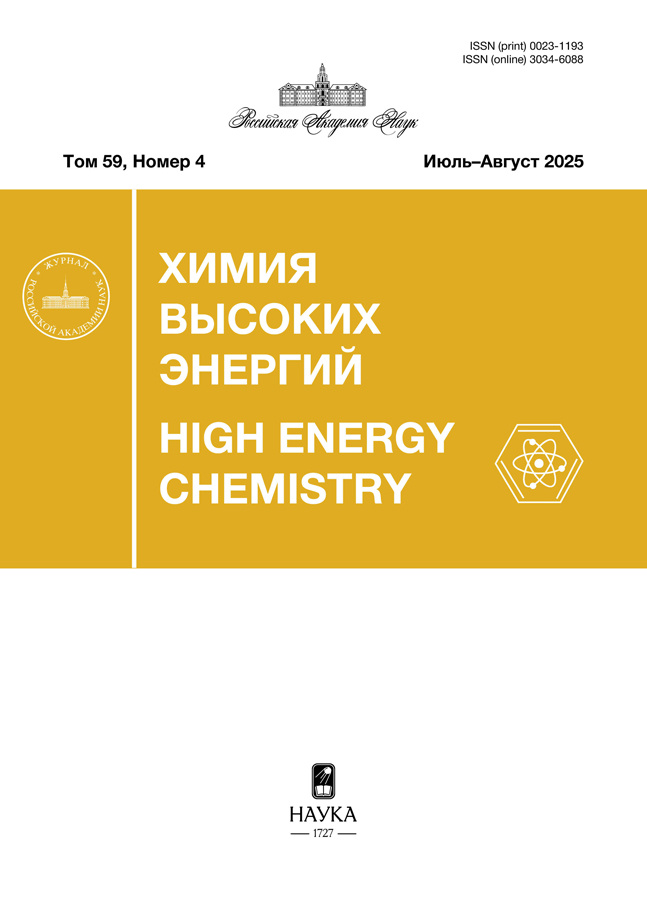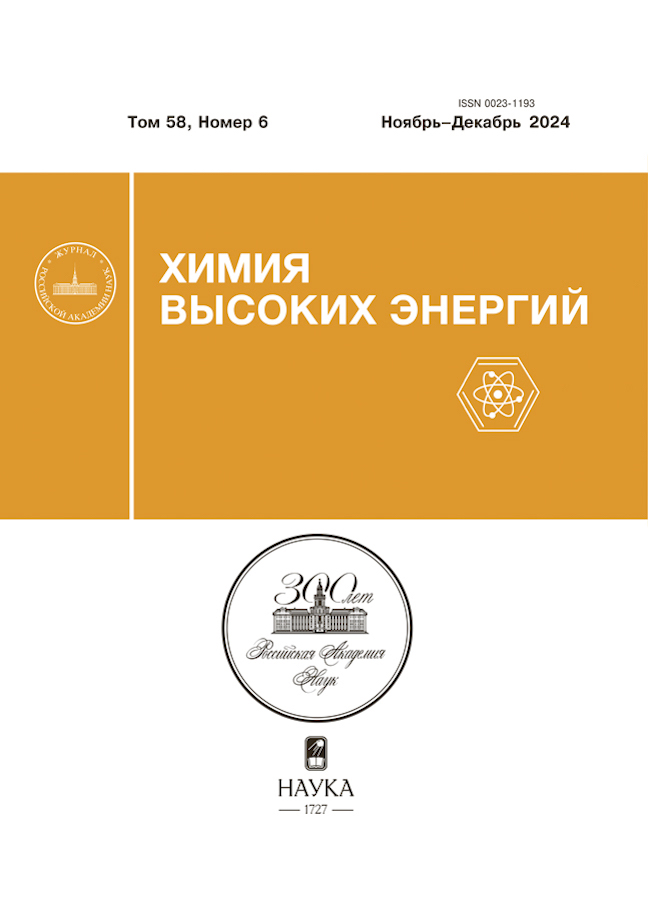Гипотетическая возможность образования октаоксида водорода в кавитационном плазменном разряде
- Авторы: Аристова Н.А.1, Иванова И.П.2, Гулько Н.К.3, Макаров А.А.3, Пискарев И.М.4
-
Учреждения:
- Нижнетагильский технологический институт (филиал) УГТУ
- Институт биологии и биомедицины Нижегородского государственного университета Н.И. Лобачевского
- Фирма АЙПЛАЗМА
- Научно-исследовательский институт ядерной физики им. Д.В. Скобельцына, Московский государственный университет им. М.В. Ломоносова, (НИИЯФ МГУ)
- Выпуск: Том 58, № 6 (2024)
- Страницы: 489-494
- Раздел: ПЛАЗМОХИМИЯ
- URL: https://permmedjournal.ru/0023-1193/article/view/681216
- DOI: https://doi.org/10.31857/S0023119324060096
- EDN: https://elibrary.ru/THJDLL
- ID: 681216
Цитировать
Полный текст
Аннотация
Исследованы характеристики воды, обработанной кавитационным плазменным электрическим разрядом. В самом разряде генерируются гидроксильные радикалы, атомы водорода и кислорода. При циклическом прохождении воды через область разряда образуются вторичные продукты, обладающие окислительными, восстановительными и слабо щелочными свойствами. Измерен выход окислителей и восстановителей в зависимости от дозы (суммарной энергии), выделяющейся в разряде. Полученные результаты дают основание предполагать, что при циклической обработке воды под действием кавитационного разряда в ней образуется октаоксид водорода H2O8. Его концентрация при дозе 240 Дж/10 мл составляет ~10−3 моль/л.
Ключевые слова
Полный текст
Об авторах
Н. А. Аристова
Нижнетагильский технологический институт (филиал) УГТУ
Email: i.m.piskarev@gmail.com
Россия, Нижний Тагил
И. П. Иванова
Институт биологии и биомедицины Нижегородского государственного университета Н.И. Лобачевского
Email: i.m.piskarev@gmail.com
Россия, Нижний Новгород
Н. К. Гулько
Фирма АЙПЛАЗМА
Email: i.m.piskarev@gmail.com
Россия, Москва
А. А. Макаров
Фирма АЙПЛАЗМА
Email: i.m.piskarev@gmail.com
Россия, Москва
И. М. Пискарев
Научно-исследовательский институт ядерной физики им. Д.В. Скобельцына, Московский государственный университет им. М.В. Ломоносова, (НИИЯФ МГУ)
Автор, ответственный за переписку.
Email: i.m.piskarev@gmail.com
Россия, Москва
Список литературы
- Rezaei F., Vanraes P., Nikiforov A. et al. // Materials. 2019. V. 12. P. 2751.
- Ihara S., Sakai T., Yoshida Y., Nishiyama H. // J. Electrostatics. 2018. V. 93. P. 110.
- Piskarev I.M. // IEEE Transactions on Plasma Science. 2021. V. 49. № 4. P. 1363.
- Levanov A.V., Sakharov D.V., Dashkova A.V. et al. // Eur. J. Inorg. Chem. 2011. P. 5144.
- Леванов А.В., Исайкина О.Я. // Журнал физической химии. 2022. № 96 (6). С. 843.
- Betul A.Y. // Word J. Adv. Res. Rev. 2021. V. 12. № 2. P. 179.
- Abramov V.O., Abramova A.V., Cravotto G. et al. // Ultrasonics – Sonochemistry. 2021. V. 70. 105323.
- Marsalek B., Marsalkova E., Odehnalova K. et al. // Water. 2020. V. 12. P. 8.
- Filipi A., Dobnik D., Guti'errez-Aguirre I. et al. // Environment Int. 2023. V. 182. 108285.
- Ihara S., Hirohata T., Kominato Y. et al. // Elect. Eng. Japan. 2014. V. 186. № 4. P. 656.
- Estifaee P., Su X., Yannam S.k. et al. // Sci. Rep. 2019. V. 9. Article 2326.
- Piskarev I.M., Ivanova I.P. // Plasma Chemistry and Plasma Processing. 2021. V. 41. P. 447.
- Charlot G. Les methods de la chimie analytique. in analyse quantitative menerale. Part II. Ed. Paris. France. Masson et Cie, 1961.
- Пикаев А.К. Современная радиационная химия. Радиолиз газов и жидкостей. М.: Наука, 1986.
- Пискарев И.М., Ушканов В.А., Аристова Н.А. и др. // Биофизика. 2010. № 55 (1). С. 9.
Дополнительные файлы














